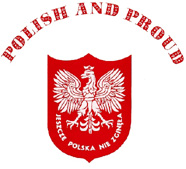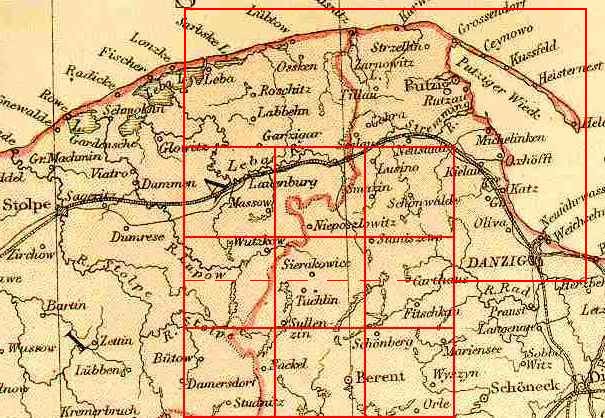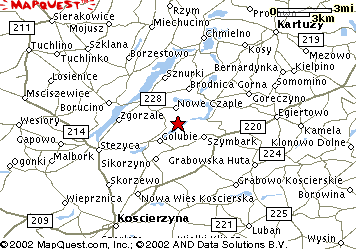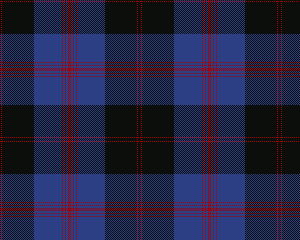Poland - A Brief History
Several European nations are the fruit of the vast migration of peoples in the early middle ages.
This is not the case of Poland. Studies of the prehistoric era, based largely on excavations, prove
that the present-day Polish people are the descendents of tribes living in the same sites thousands of years ago. The
discovery of the remains of the town of Biskupin and further archeological studies prove that the buildings found on the island
in the lake of Biskupin date from well before the birth of Christ.
The birth of Poland as an independent nation coincides with the ascension of Mieszko I, in the year 960.
The major achievements of Mieszko was the adoption of the Christian faith under the authority of Rome -
a fact which shaped Poland's history for the following centuries, and to this day.
Mieszko I died in A.D. 992. He was succeeded by his son, Boleslaw the Brave, who extended the boundaries
of Poland and at the head of his army reached Kiev on the River Dnieper, later the capital of the Ukraine. He in turn
was succeeded by his son Kieszko II, who reigned from 1025 to 1034. All these kings were members of the Dynasty of Piast,
which continued its rule for several centuries.
The territory of Poland of that time was quite similar of the present one, except that it did not include
much of Silesia.
After several kings of the House of Piast, it produced its greatest monarch - Casimir the Great (1333-1378),
who achieved during his long reign many changes and improvements throughout the country. Many splendid buildings - churches
and castles - built under Casimir are still there. He allowed the Jews, expelled from other European countries, to settle
in Poland and enjoy full freedom, including in religion and business.
Not all kings of Poland were Polish. There is nothing in that - after all, the present royal house
of Britain is of German origin. King Louis (1370-1382) was a member of the French House of Anjou, founded by Saint Louis,
but he was also king of Hungary, Poland, Dalmatia, Croatia, Rama, Serbia, Galacia, Lodomeria, Romania, and Bulgaria.
The vast empire of the Anjou dynasty did not promise to last long, as Louis had as yet no issue. Later he had two daughters:
the princesses Elisabeth and Jadwiga, who became Queen of Poland in 1384.
Lithuania was at the time a major power. It extended over the territories now known as Bielorussia and Ukraine.
It was in conflict with Poland and several battles were fought. The Polish senators, however, planned a masterpiece
of statesmanship: a marriage of Grand Duke Jagiella with Queen Jadwiga. It would be a great sacrifice on her part, as
the grand duke was three times her age and she was a beauty.
Jagiello was baptized in the Catholic faith and took the name Wladyslaw. The Lithuanians were at the
time pagans, worshipping snakes. Jagiello's brother Witold was also baptized. The union of Poland and Lithuania
was not an annexation. Lithuania retained its identity and kept it for centuries, but the King of Poland was also Grand
Duke of Lithuania.
The union of the two nations resulted in the largest power in Europe and remained in force for the following
centuries. Some of the greatest men in Poland - such as the poet Mickiewicz in the 19th century and the national leader
Pilsudski in the 20th - were of Lithuanian origin, but they did not know the Lithuanian language which, unlike Polish, is
not a Slavonic language. The population of Lithuania was largely Ruthenian.
Jagiello proved to be a great statesman and became the founder of the Jagiellonian dynasty, which ruled
the union for centuries.
Both Lithuania and Poland had been attacked by the Order of Teutonic Knights, a military order based in
East Prussia. The German order was a major power which endeavored to extend its area eastward and south, and the Teutonic
Knights were armed better than most European nations. Yet when the Teutonic Knights attacked in 1410, the united Polish
and Lithuanian forces under the command of Jagwiello defeated them in the great battle of Grunwald. Thus the Prussian
efforts to conquer the entire Baltic coast and the northern provinces of the Polish-Lithuanian union were finished forever.
The last Jagwiellonian king was Zygmunt-August (1548-1572). He was followed by Henri de Valois, a
Frenchman. The next kings were Stefan-Batory, a Hungarian, and Zygmunt Vasa, a Swede. The throne of the Polish-Lithuanian
union was elective - a democratic feature unknown in other European countries. Foreign princes were elected largely
because a Polish king might be considered as a favor for Poland and a Lithuanian one a favor for his country, while a foreigner
was neutral.
Nevertheless, one of the best kings was Jan Sobieski (1674-1696), who saved Europe from a Turkish invasion.
The Ottoman empire was then a major power. Its huge army beseiged Vienna, which had been seized it would have meant
the victorious Turkish army would continue its invasion and thus place western Europe in mortal danger. Jan Sobieski,
a great commander, saved Europe. His letters to his wife, a French princess, are a literary masterpiece.
The last king of the Union was Stanislaw Poniatowski (1764-1795).
In 1796, three powers - Germany, Russia, and Austria - joined in attacking and partitioning Poland.
Thadeus Kosciuszko, who had taken an active part in the American Revolution, fought to the last but could not defeat the three
major powers, which partitioned the "Commonwealth of Both Nations" as the Polish-Lithuanian Union was called.
Throughout the 19th century Poland endeavored to win back its freedom, the the difference of power was too
great. Through the uprisings of 1830 and 1863 the unequal battle continued, at the cost of thousands of lives.
The First World War offered and opportunity: Pilsudski organized underground "The Legion" which fought against
Russia. At the end of the was the Congress of Versailles was negotiating peace terms, with Poland's independence as
one of the goals, largely thanks to the efforts of the great pianist Paderewski, who was a friend of President Wilson.
Poland was independent again in 1918, but just two years later the Soviet army attacked it, trying to recover
the conquest of the czars.
With only two years to organize an army, Pilsudski was helped by his Legionnaires and when the Soviet army
approached Warsaw he defeated it and chased the Russians as far as Kiev. Stalin, a member of the Red Army, never forgot the
humiliation he suffered, hence his hatred for Poland.
The Second World War started in Poland, with the German invasion in September 1939. Poland had no
chance against the powerful German army and air force, but nevertheless resisted for a long time and continued to fight when
the German invaders had already conquered half of the country. Actually, the Polish forces gave France and Britain time
to prepare their armies.
The Polish soldiers managed to get to the west when further defense was impossible, and joined the French
and British. Their help was particularly significant in the British Royal Air Force, which had excellent aircraft but
not enough experienced pilots. In the German air attacks against Enland - the Battle of Britain - Polish fighter pilots
shot down more German bombers than the British themselves.
Most European countries invaded by the Germans formed pro-Nazi governmens; this was particularly evident
in France. While other nations, including France, had their Quislings, Poland never did.
At the end of the Second World War, Poland was compelled by its Yalta Pact allies Britain and the United
States to submit to a Communist government. It was against the will of the Polish nation, which had a great deal of
experience with Russia and did not trust it, and communism was alien to a Catholic nation.
The election of a Polish pope the first non-Italian in generations helped to support the national spirit
and contributed considerably in shaking off the communist rule.
Without resort to violence, the Polish nation restored its independence and without any talk about "the
people", it chose as it leader a working man and devout Catholic -Lech Walesa.
The new Poland is quite different from the pre-war one: it is not even the same on the map - the whole country
was moved miles to the west.
Perhapes even more important was the change in the population. Pre-war Poland had some 30% of minorities:
Germans in the west, Ukrainians and Bielorusssians in the east and Jews in most towns. Now the Germans had gone to Germany,
the Ukrainians acquired some eastern sections in the east and the Jews who survived the Nazi terror emigrated to Israel.
Poland is today a very homogenous country, with about 95% of the people of the same origin, the same language and religion.
===============================================
Pomerania - A History
The historical region of Pomerania (Polish: Pomorze, German: Pommern) comprised the areas of the southern coast
of the Baltic Sea between the estuaries of the Oder and Vistula Rivers. During the Middle Ages it was mostly inhabited
by Slavonic peoples akin to the Poles. The eastern portion of this region then became part of Royal Prussia
and since that time the name Pomerania has been limited to the western and central parts of the region (except for Poland,
where the old usage of the term "Pomerania" has been retained.)
Until the 17th century, the Province of Pomerania, was ruled by native princes but under the dependence of Poland
(up to the 12 th century), and later Brandenburg and Sweden. Its inhabitants accepted Protestantism and were influenced
by the German culture. More and more Germans settled there and the original Slavonic inhabitants gradually lost their
original language. In the early 1600's Pomerania was annexed by Sweden. During the next century most of it was
incorporated into Brandenburg, therefore becoming part of Prussia.
In 1815 northern portions of historical Brandenburg, so-called Neumark, were added to Pomerania together with
some former parts of the Kingdom of Poland, which were already taken by Brandenburg in the second half of the century. At
this point Pomerania was practically entirely German-speaking and Protestant, except for the easternmost districts (once
Polish) where a Polish-speaking, partially Catholic minority remained.
This province remained in Germany after WWI. Minor adjustments were made to the Polish border in 1920.
After WWII, the greater part of Pomerania was incorporated into Poland. The German inhabitants of the province
escaped or were expelled and the Poles from the formerly Polish regions in the East settled in Pomerania. Only the western
districts (German: Vorpommern) remained part of post-WWII Germany.
====================================================
SPECIAL NOTE
Debbie hasn't really given me any details on her heritage as yet. I am the only one really seeking
information. The one thing she has said is that her family is from Minnesota and that she has some Chippewa Indian blood
in her ancestry. Also her grandmother was named Warden (I believe that is correct) and that by marrying her, I can where
a kilt! The pattern is reflective of the Region of Angus. That is why there are Scottish links that follow.
Debbie's last name (maiden name) is ZIEGENBEIN. She comes from German/ Czech stock. Makes life
really interesting!
I will give you more information as I get it.





